What are Trigger Points?
Posted by Kirby Strissel on October 29, 2021
One term that often comes up when discussing myofascial pain is a “trigger point”.
What exactly is a trigger point?
Travell and Simons define a trigger point as, “a highly irritable localized spot of exquisite tenderness in a nodule in a palpable taut band of muscle tissue.” Dr. Janet Travell is recognized as the leading pioneer in the diagnosis and treatment of myofascial pain. She was also the Surgeon General to two U.S. Presidents. Dr. David Simmons worked with Dr. Travell to bring their research to print in the books Myofascial Pain and Dysfunction: The Trigger Point Manual, volumes I & II.
Most of us have felt a knot or nodule in a muscle. Sometimes these nodules are present but do not hurt when pressed on. A trigger point will always hurt when pressed on. This is one of the signs that a trigger point is present versus a knot in the muscle.
I have often jokingly referred to trigger points as “knots with attitude problems” when explaining them to clients.
Trigger points can form anywhere in the muscle but there are spots where trigger points are more prone to develop in the various muscles. These locations can be found in the different charts and books that I have read that in essence give a road map to help navigate treating a trigger point.
When a trigger point is present it causes pain when pressed upon. This pain can be localized or referred elsewhere on the body. Other symptoms that may be present with a trigger point are weakness, limited range of motion, stiffness, edema, nausea, and dizziness. The presence of a trigger point can cause compression on vessels and nerves leading to numbness, tingling, burning, and hypersensitivity and can also impede blood flow in arteries and blood return in the veins.
Problems with movement can also manifest. With pain there can be less movement of a limb or joint. The body can splint or guard this area because of pain and this can lead to fatigue and modified movement patterns.
Why do trigger points form?
Sometimes abnormal bone structure, metabolic disorders and vitamin or mineral deficiencies can lead to trigger point formation. Some other more common causes can be postural stress, repetitive movements, trauma to the muscle and psychological factors such as stress. An important part of treating trigger points is working to find the source or sources of their formation and then make any appropriate changes you can to help control the repeated formation of the trigger points.
There are three treatment options that Travell and Simons found work on trigger points, all of which are physical interventions:
- The first is injecting the trigger point with a local anesthetic. Dry needling can also achieve the same results.
- The second is a spray and stretch technique where the skin is sprayed with a refrigerant and then an isolated stretch is performed to address the affected muscle.
- The third treatment that Travell and Simons found to be the safest and most effective is deep stroking massage to address the trigger point.
You cannot think trigger points away with good thoughts or meditation. The first two options are only to be done in a doctor’s office. The challenges with the first two options are the potential for the trigger point to move or roll with the needle, accidentally hitting a vessel with the needle and not getting the muscle isolated and stretched properly. With the massage techniques people can find and work on the trigger point with little to no risk to the surrounding tissue and vessels.
Typically when a trigger point is worked on there is going to be a certain level of discomfort. The therapist will loosen the tissue up and then apply direct pressure on the trigger point. While doing this there may be localized pain, referred pain, numbness, nausea or any of the other symptoms you may see when an active trigger point is causing a problem.
Although uncomfortable, this discomfort is good because it indicates to the therapist that they are working in the correct area. Using a pain scale of 1 to 10 the therapist will apply pressure to bring the discomfort up to a 7 or 8, whatever is tolerable for the client, and then keep static pressure on the trigger point until it releases. There may be a complete release or partial release of the trigger point, but there should be a lessening of the symptoms for the client.
Like many massage treatments it may take more than one visit to completely resolve the problem.
With a series of treatments and with the client doing any needed homework to help deal with factors that may be contributing to the trigger point formation, people can get long lasting relief from the discomfort caused by trigger points. Trigger point pain can be a problem for people but it does not need to be a life-long problem. With a little work people can get their pain under control and return to normal function and activities.
Sources:
Davies, Clair. The Trigger Point Therapy Workbook. New Harbinger Publications, 2001.
Finando, Donna, L.Ac. & Finando, Steven, Ph.D., L.Ac. Trigger Point Therapy for Myofascial Pain. Healing Arts Press, 2005.

Kirby Strissel
Kirby is Board Certified in Therapeutic Massage and Bodywork (BCTMB). He received his training at Sister Rosalind Gefre School of Professional Massage. Upon graduation in April 2004, he was hired on as a therapist. Kirby joined the RAC staff in January 2006 as a Massage Therapist.
Contact Kirby Strissel



